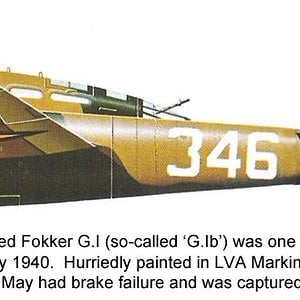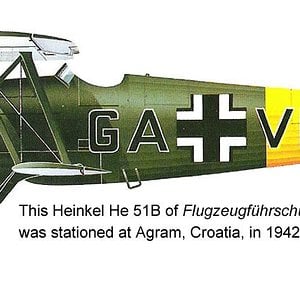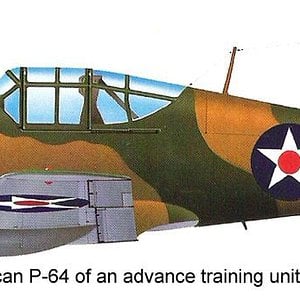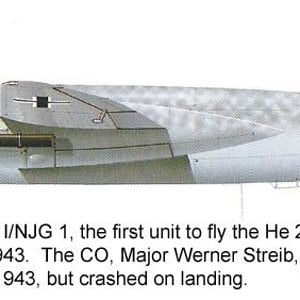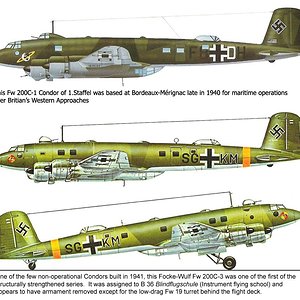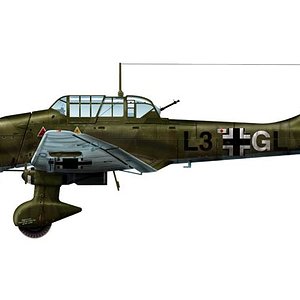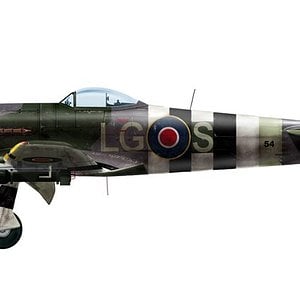Navigation
Install the app
How to install the app on iOS
Follow along with the video below to see how to install our site as a web app on your home screen.
Note: This feature may not be available in some browsers.
More options
You are using an out of date browser. It may not display this or other websites correctly.
You should upgrade or use an alternative browser.
You should upgrade or use an alternative browser.
The Heinkel He 219 Uhu (Eagle-Owl) was a night fighter serving with the German Luftwaffe in the later stages of World War II. A relatively sophisticated aircraft, the He 219 possessed a variety of innovations, including an advanced intercept radar. It was also the first operational aircraft in the world to be equipped with ejection seats, and the first German aircraft with tricycle landing gear. Had the Uhu been available in quantity, it might have had a significant effect upon the strategic bomber offensive of the Royal Air Force, but only 268 were built before the end of the War and they saw only limited service.
The He 219 was a capable fighter aircraft, allowing the pilots a large degree of autonomy. Ground control simply got them into the right area and then the pilots took over and hunted down the bombers on their own; the SN-2 radar's 4 km (3 mi) range was greater than the distance between the bombers. While the performance of the A-5 was not extraordinary — approximately 580 km/h (360 mph) speed — it was enough of an advance over the Messerschmitt Bf 110s and Junkers Ju 88Gs to allow the aircraft to chase several bombers in one sortie.
The He 219 was the only piston-engined German night fighter capable of facing the British Mosquito on equal terms, given its speed, manoeuvrability and fire power.
Source:
Info: Wikipedia
http://en.wikipedia.org/wiki/Heinkel_He_219
Profile: German Warplanes of World War II
Published by Temple Press/Aerospace
The He 219 was a capable fighter aircraft, allowing the pilots a large degree of autonomy. Ground control simply got them into the right area and then the pilots took over and hunted down the bombers on their own; the SN-2 radar's 4 km (3 mi) range was greater than the distance between the bombers. While the performance of the A-5 was not extraordinary — approximately 580 km/h (360 mph) speed — it was enough of an advance over the Messerschmitt Bf 110s and Junkers Ju 88Gs to allow the aircraft to chase several bombers in one sortie.
The He 219 was the only piston-engined German night fighter capable of facing the British Mosquito on equal terms, given its speed, manoeuvrability and fire power.
Source:
Info: Wikipedia
http://en.wikipedia.org/wiki/Heinkel_He_219
Profile: German Warplanes of World War II
Published by Temple Press/Aerospace


